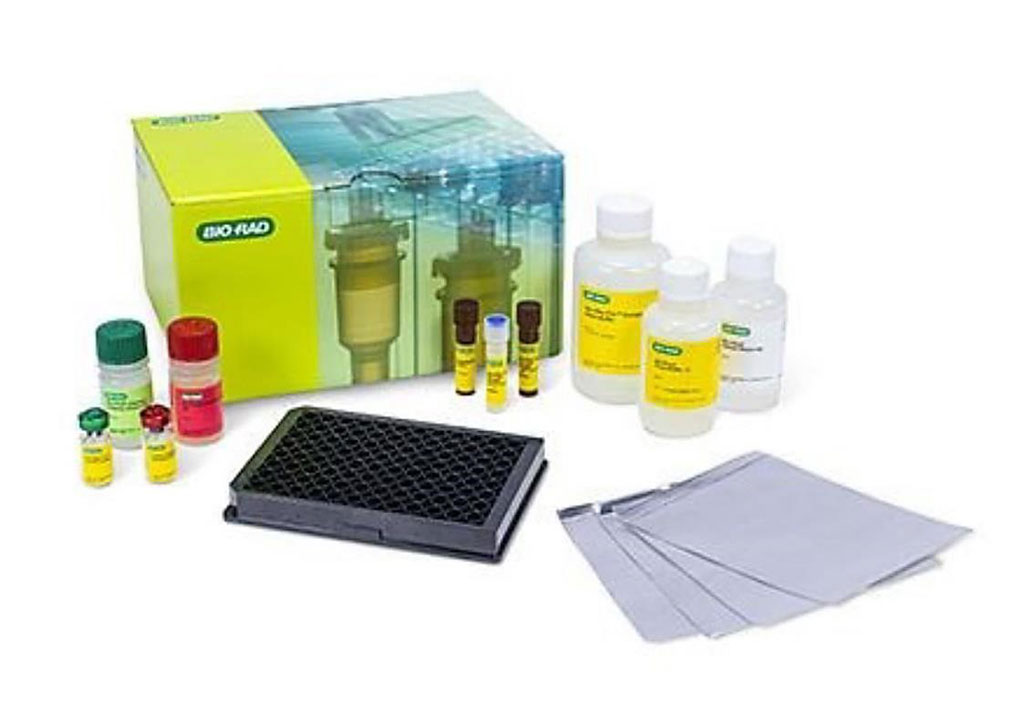Early Differences in Cytokine Production Distinguish Severity of COVID-19
By LabMedica International staff writers
Posted on 27 Jan 2021
Most COVID-19 patients experience asymptomatic/mild symptoms, but some suffer critical symptoms requiring intensive care. It is important to determine how asymptomatic/mild patients react to SARS-CoV-2 infection and suppress virus spread.Posted on 27 Jan 2021
It has been shown that several components of the immune response are dysregulated in COVID-19 patients with severe symptoms. Monocytes and macrophages were significantly dysregulated in severe patients. Dendritic cells and natural killer (NK) cells were depleted in COVID-19 patients compared to healthy controls, and it has been determined that those cells are dysregulated in the setting of SARS-CoV-2 infection.

Image: The Bio-Plex Pro Human Cytokine Screening 48-plex panel (Photo courtesy of Bio-Rad Laboratories).
A team of Clinical Virologists at the Kobe University Graduate School of Medicine (Kobe, Japan) analyzed cytokines induced by the innate immune response in 95 COVID-19 patients (median age, 50 years; 55% male) with different disease severities during their early phase of infection, less than 10 days after symptom onset or after an asymptomatic patient being notified of contact with a positive case. Of the patients, 16 were asymptomatic, 49 had mild disease, 11 had moderate disease, and 19 had severe disease.
The diagnosis of COVID-19 was determined by the detection of SARS-CoV-2 genome in a nasopharyngeal swab sample by polymerase chain reaction (PCR). Serum samples were subjected to the measurements of cytokines, chemokines, and growth factor (CCG) with the Bio-Plex Pro Human Cytokine Screening 48-plex panel (Bio-Rad Laboratories, Hercules, CA, USA) and the results were read using the Bio-Plex 200 system.
The team reported that IL-12 level was significantly higher in both the asymptomatic group and the mild group compared to the moderate and severe groups. Similarly, serum level of IL-2 was found to be significantly higher in the asymptomatic and mild COVID-19 patients compared with moderate and severe patients. Meanwhile, serum level of IL-18 was significantly higher in the symptomatic COVID-19 patients compared with asymptomatic patients and healthy controls. Similarly, the team found that IL-6 level increased with the severity level of COVID-19 in the acute phase. The investigators noted that IL-2 is also known as a growth factor for NK cells and has a synergistic effect with IL-18 to enhance the cytotoxicity and expansion of NK cells.
The authors concluded that their investigation was the first to show that during the acute phase of infection, significantly higher levels of IL-12 and IL-2 were induced in COVID-19 patients with asymptomatic and mild symptoms compared to those with moderate and severe symptoms, indicating the important roles of these two cytokines in the protection from severe COVID19. The study was published on January 7, 2021 in the Journal of Infectious Diseases.
Related Links:
Kobe University Graduate School of Medicine
Bio-Rad Laboratories













